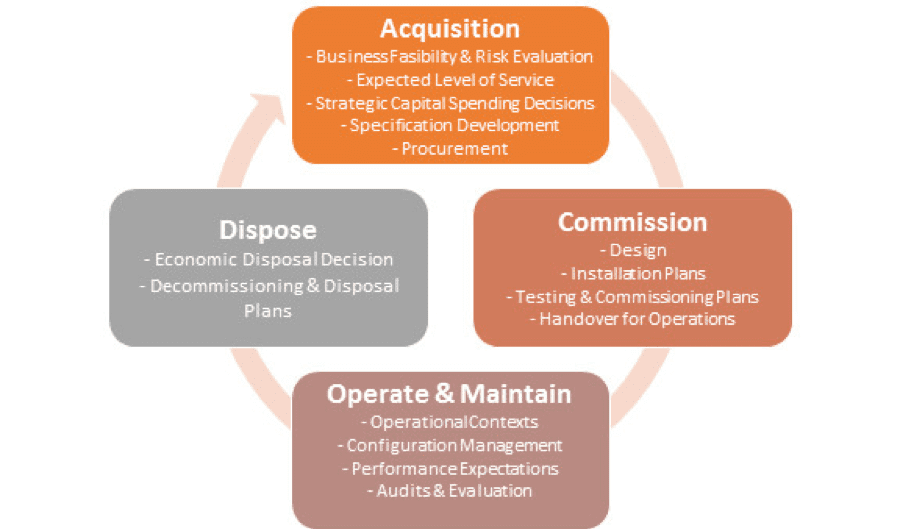
Physical Asset Management has received a lot of attention in recent years within the asset intensive industries e.g. oil/gas, energy, utilities, process & manufacturing. On one hand, the release of PAS 55 & its subsequent follow-up by ISO 55000 has brought Physical Asset Management within limelight & on the other hand it has created an ambiguity for many Maintenance practitioners.

Before going into the differences between Maintenance & Asset Management, let’s first define some key terminologies:
- Asset: item, thing or entity that has potential or actual value to an organization (Reference: ISO 55000-1)
- Asset Management: coordinated activity of an organization to realize value from assets (Reference: ISO 55000-1) (Asset) Life Cycle: stages involved in the management of an asset (Reference: ISO 55000-1)
- Maintenance: the upkeep of industrial facilities & equipment (Reference: Dictionary of Engineering, McGraw Hill, Second Edition)
In essence, Asset Management is a conscious, systematic & coordinated effort towards realizing value from an asset or a portfolio of assets in a sustainable way throughout their life cycle. The life cycle of an asset can be illustrated as follows:

Asset Management function is primarily focused on reducing & optimizing asset life cycle cost through all the stages. While, Maintenance function is responsible for ensuring that the asset keeps on performing its intended functions in a reliable & efficient manner.
As we can see, Maintenance is an integral part of Asset Management. This however, should not limit the Maintenance function only to one life cycle stage as it has important linkages with other stages as well.
Proper involvement & participation of/by Maintenance function during following activities is essential for success of any Asset Management System:
1. Acquisition:
- Specification Development
- Technical evaluation for Procurement
2. Commission:
- Installation review
- Testing (FAT/SAT) & Commissioning activities
- Handover
3. Dispose:
- Decommissioning & Disposal Planning
Asset Management requires good coordination among various organizational functions such as Project Management, Engineering/Design, Operations, Maintenance, Finance, Procurement, Health/Safety/Environment (HSE) & Sales in order to ensure a proper & thorough implementation of Asset Management.
Most of the organizations around the world are already practicing Asset Management in some form or the other. However, ISO 55000 standard aims to ensure a holistic approach towards Asset Management. With further adoption of the standard across industries & newer regulations, organizational structures are already adopting to inculcate strategic Asset Management to improve their organizational efficiency.
 Ask a question or send along a comment.
Please login to view and use the contact form.
Ask a question or send along a comment.
Please login to view and use the contact form.
This is a simple article that is well written and easily explains the difference between the asset management focus on ensuring the best return-on-investment throughout an asset’s life vs the maintenance/reliability desire to ensure the asset continues to achieve its designed functions for the duration of its life.
Very interesting and well explained article.
Cheers to the Maintainers……